Attention all outdoor enthusiasts and fishing fanatics! Are you ready to embark on a thrilling adventure that combines the freedom of kayaking with the excitement of fishing? If so, you’ve come to the right place. In this ultimate guide, we will dive deep into the world of kayak fishing and equip you with the knowledge and skills needed to conquer the open waters and reel in a bountiful catch. Whether you’re a seasoned angler looking to explore new waters or a beginner eager to learn the ropes, join us as we uncover the secrets, tips, and techniques on how to kayak fish that will take your kayak fishing game to the next level.
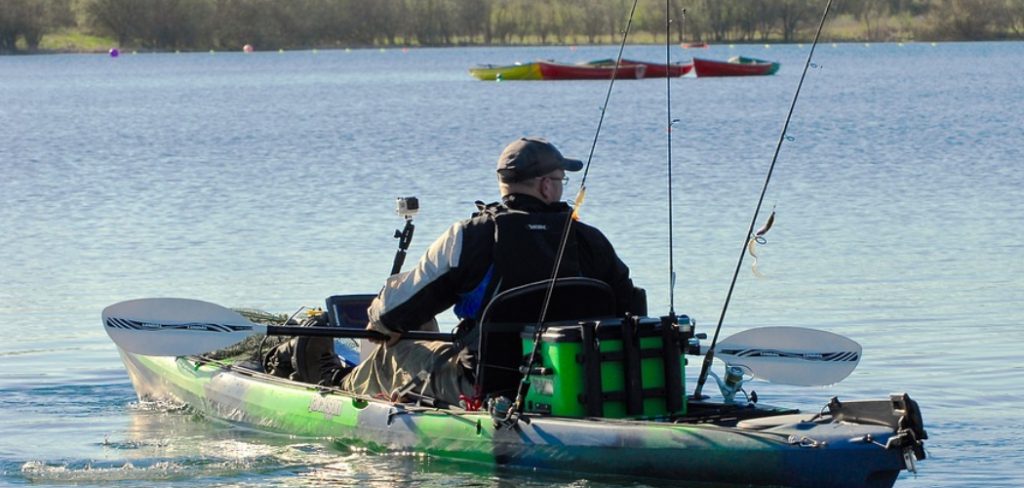
From selecting the perfect kayak and essential gear to mastering the art of casting and navigating through various fishing situations, let’s explore the vast possibilities that await you in the mesmerizing world of kayak fishing. Get ready to paddle, cast, and reel in unforgettable memories as we dive headfirst into the thrilling realm of kayak fishing!
Necessary Materials
Before we get started, it’s important to ensure that you have all the necessary materials for a successful kayak fishing trip. Here are a few essential items you will need:
A Durable and Stable Kayak:
There are various types of kayaks available in the market, but for fishing purposes, a sit-on-top or sit-inside kayak is recommended.
Paddle:
You will need a paddle to maneuver your kayak and reach the desired fishing spot.
Personal Flotation Device (PFD):
Safety first! It’s crucial to always wear a PFD while kayaking, especially when fishing in open waters.
Fishing Gear:
This includes a rod, reel, line, hooks, baits/lures, and any other tools or accessories you prefer to use while fishing.
Anchor:
An anchor will help you stay in one spot and prevent drifting while fishing.
Tackle Box:
A tackle box is essential for storing all your fishing gear and keeping it organized.
10 Simple Step-by-step Guidelines on How to Kayak Fish
Step 1: Choose the Right Location
The first step to a successful kayak fishing trip is selecting the right location. Research potential spots and consider factors such as water conditions, accessibility, and fish species present in the area. You can also reach out to local fishing communities for recommendations on prime kayak fishing locations.
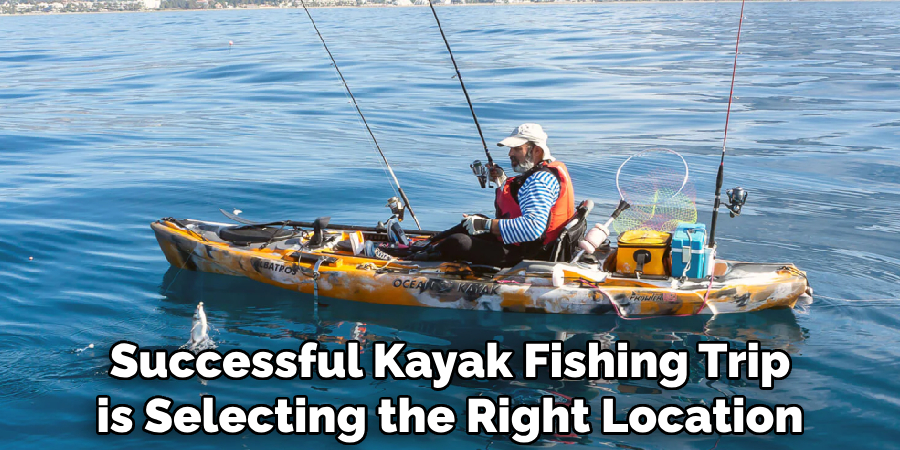
Step 2: Wear Proper Attire
Dress comfortably and wear clothes that are appropriate for the weather conditions. It’s also recommended to wear quick-drying clothing, as you will most likely get splashed or wet while kayaking. But most importantly, always wear a PFD. It could save your life in case of an accident. It’s also a good idea to bring a change of clothes in case you get completely soaked.
Step 3: Pack the Essentials
Make sure you have all the necessary materials mentioned above before heading out. Always double-check and make sure everything is in working condition. Also, consider bringing sunscreen, a hat, sunglasses, and snacks for your trip. But remember to pack light, as you don’t want too much weight on your kayak. This could make it unstable and affect your fishing experience.
Step 4: Prepare Your Kayak
Set up your kayak by adjusting the seat and footrests to ensure maximum comfort. You can also attach an anchor trolley system to your kayak for easier anchoring. You can find various tutorials online on how to set up your kayak for fishing. This will help you customize your kayak to fit your fishing style and needs.
Step 5: Launch Your Kayak
Make sure you are in a safe and stable position before launching your kayak. Push off the shore with one hand while holding onto the paddle with the other. Once in deeper waters, get into your kayak and carefully sit down. It’s essential to maintain the kayak’s balance when entering and exiting to avoid capsizing.
Step 6: Paddle to Your Fishing Spot
Use your paddle to navigate towards your desired fishing location. Make sure to maintain a steady and comfortable pace, keeping in mind any potential obstacles or changes in water conditions. But don’t be afraid to explore and try out different spots if you’re not getting any bites. Sometimes, the best fishing spots are hidden and require a little bit of exploration.
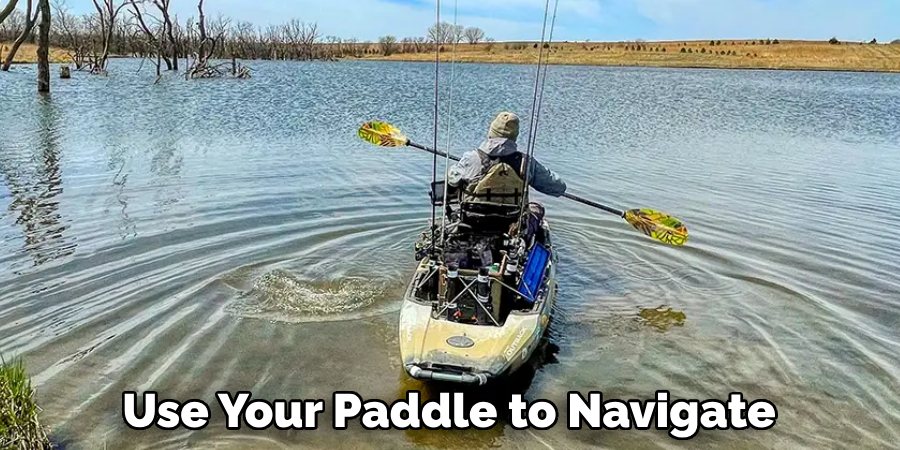
Step 7: Anchor Your Kayak
Once you have reached your desired spot, use your anchor to secure yourself in place. Make sure the rope is attached to both ends of your kayak to prevent drifting. It’s essential to have a quick-release system in case you need to move quickly or if the weather conditions change. You can also use a stake-out pole if you’re fishing in shallow waters.
Step 8: Ready Your Fishing Gear
Attach your rod and reel, and make sure your line is properly set up. You can also set up multiple lines using different baits or lures to increase your chances of catching fish. Make sure all your gear is within reach for quick access when needed. This will also help you avoid any tangles or mishaps while on the water.
Step 9: Cast Your Line
This is where the real fun begins! Use your preferred casting technique to cast out your line and wait for a bite. Don’t be discouraged if you don’t get any bites right away. Sometimes, it takes a little patience and persistence to reel in the big catch. While waiting, you can also enjoy the peacefulness of being on the water and take in the beautiful surroundings.
Step 10: Reel in Your Catch
Once you feel a tug on your line, it’s time to reel in your catch! Use your rod to guide the fish toward you and use steady but gentle pressure to bring them on board. Once the fish is close enough, use a net to scoop them up and safely release them back into the water or store them in your life. Congratulations, you just caught your first fish from a kayak!
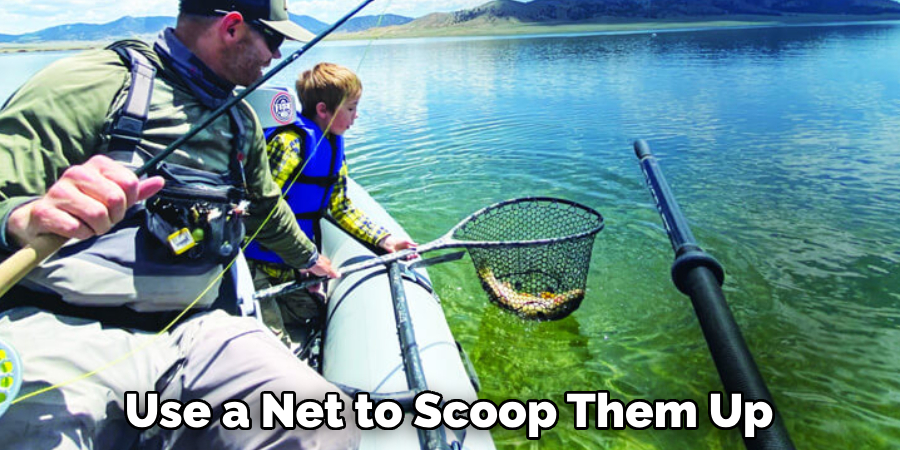
Following these steps will not only help you become a successful kayak angler but also ensure your safety and comfort while on the water. Always remember to respect nature and follow any fishing regulations and guidelines in your area.
Now, go out there and enjoy the thrilling experience of kayak fishing! So, now that you have learned how to kayak fish, it’s time to put your skills to the test and enjoy the wonderful world of kayak fishing. Remember to always stay safe, respect nature, and have fun! Happy fishing! So, are you ready to embark on your next adventure? Grab your gear, hop on your kayak, and let the journey begin! See you on the water!
Frequently Asked Questions
Q1: Do I Need a Special Kayak for Fishing?
A1: While there are kayaks specifically designed for fishing, any stable and comfortable kayak can be used for fishing. It’s more important to set up your kayak with the necessary accessories and gear to fit your fishing needs.
Q2: Can I Fish Alone on a Kayak?
A2: It’s generally recommended to have a fishing buddy or let someone know your location and expected return time when going kayak fishing. However, with proper safety precautions and equipment, it is possible to fish alone on a kayak. Always prioritize your safety while on the water.
Q3: What Fish Can I Catch While Kayak Fishing?
A3: The fish species you can catch while kayak fishing depends on your location and the water conditions. But common fish caught while kayak fishing includes bass, trout, salmon, and catfish. Do some research on the local fish species in your area for better chances of a successful fishing trip. So, don’t limit yourself to just one type of fish and be open to trying new techniques and locations for a diverse fishing experience.
Q4: What Should I Do in Case of an Emergency?
A4: Always wear a PFD and bring a whistle for signaling if you get into trouble. If your kayak capsizes, try to stay calm and hold onto the kayak while waiting for help or attempting to flip it back over. It’s also essential to have a first aid kit onboard in case of any injuries. Always prioritize your safety and be prepared for any emergency situations while on the water.
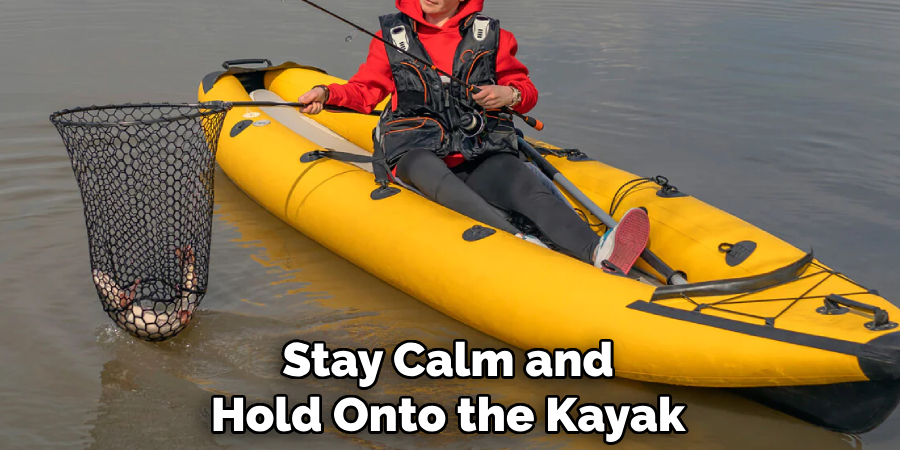
Conclusion
In conclusion, learning how to kayak fish is a unique and exciting way to experience both the thrill of kayaking and the serenity of fishing. We have covered several important aspects that will help you get started on your kayak fishing journey – from choosing the right equipment to mastering paddling techniques and safety tips, to finding the perfect fishing spot. Remember to always respect nature and follow local regulations while out on the water. As you embark on your new adventure, don’t forget to share your experiences with others and join the passionate community of kayak anglers worldwide.
About the Author
Jennifer Branett is the author of Fishy Kayak and an expert in fish-related fields, with over 10 years of experience. Her work blends passion for fishing with a commitment to conservation.
Educational Background
Degree: Bachelor’s in Marine Biology
Institution: University of California, Santa Barbara
Specializations: Aquatic ecosystems, fish behavior, and sustainable practices
Professional Experience
Conservation Projects:
Collaborated with local organizations to restore aquatic habitats
Developed educational programs on sustainable fishing practices
Publications:
Authored articles for fishing magazines and environmental journals
Featured speaker at fishing expos and conservation conferences
Key Areas of Expertise
Fishing Techniques:
Kayak fishing strategies
Freshwater and saltwater fishing methods
Environmental Stewardship:
Advocacy for sustainable fishing
Promoting biodiversity in aquatic environments
Awards and Recognition
Recipient of the [Specific Award Name] for contributions to marine conservation
Recognized as a leading voice in the fishing community by [Organization/Publication Name]
Community Engagement
Workshops and Seminars:
Regularly hosts events to educate anglers on sustainable practices
Engages with youth programs to inspire the next generation of fishers
Online Presence:
Maintains an active blog sharing tips, stories, and conservation efforts
Engages with followers on social media to promote fishing ethics
Personal Interests
Enjoys kayaking in scenic locations
Passionate about photography, capturing the beauty of nature
Advocates for local conservation efforts in her community
